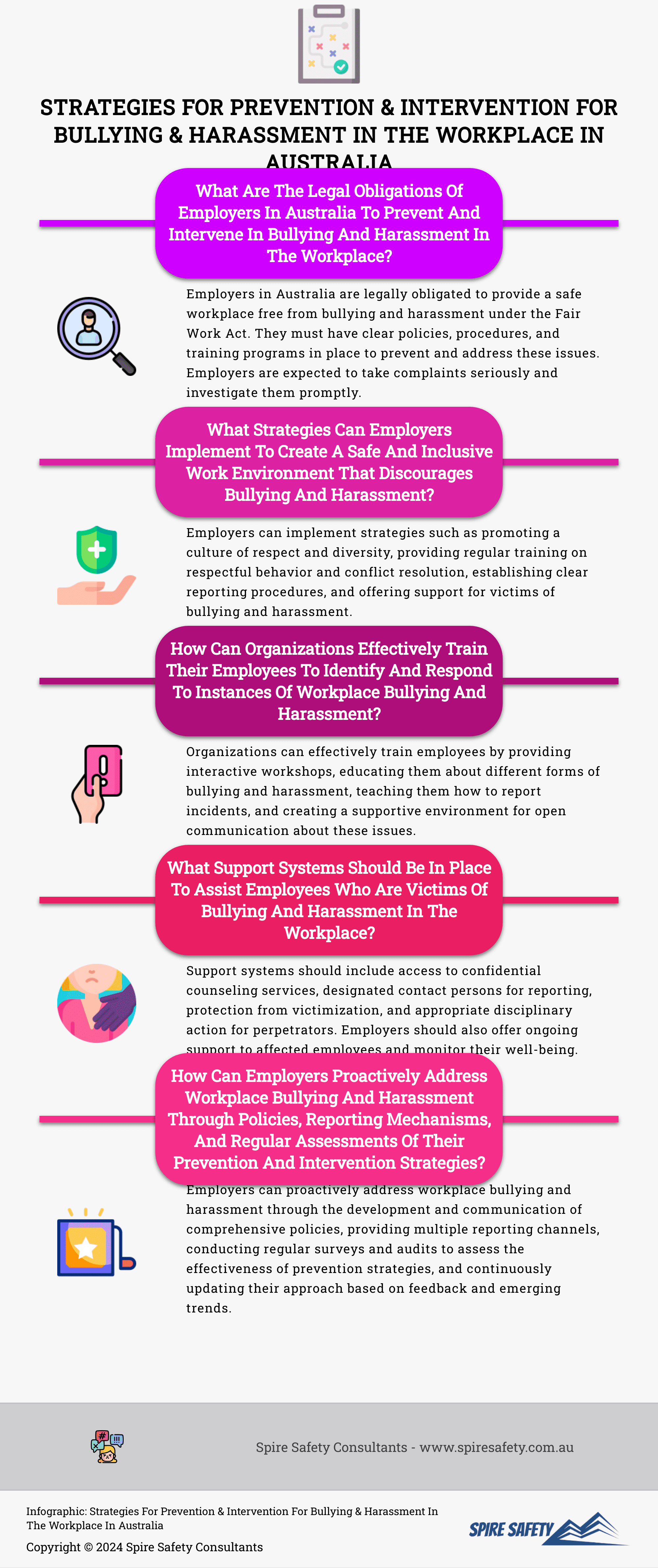Discover effective strategies for preventing and addressing workplace bullying and harassment in Australia.
Learn how to create a safe and respectful work environment through policies, training, intervention techniques, and proactive measures.
Gain valuable insights, tips, and actionable advice to protect your employees and foster a positive workplace culture.
Introduction
Bullying and harassment have no place in the workplace, and employers in Australia have a legal obligation to prevent and address these issues. This article explores effective strategies for preventing and intervening in workplace bullying and harassment.
By implementing robust policies, providing training and education, promoting a respectful work environment, and taking timely intervention measures, employers can create a safe and healthy workplace for their employees.
Whether you are an employer, HR professional, or employee, this article offers essential information to help you navigate these challenging situations.
Key Takeaways:
- Prevention and intervention strategies are necessary to address workplace bullying and harassment effectively.
- Developing comprehensive policies, providing training, and promoting awareness are key elements in prevention.
- Timely intervention, investigation, and appropriate action are crucial for handling incidents.
- A proactive approach, fostering a supportive culture, and open communication contribute to a respectful work environment.

1. What is Workplace Bullying and Harassment?
Workplace bullying involves repeated and unreasonable behavior that creates a risk to an individual’s health and safety. Harassment refers to unwelcome behavior based on protected attributes, such as sex or race. Understanding these terms is crucial in preventing and addressing workplace mistreatment.
2. The Importance of Prevention and Intervention
Prevention and intervention are essential to address workplace bullying and harassment effectively. By implementing proactive strategies, organizations can create a respectful work culture, protect employee well-being, and minimize legal and reputational risks.
3. Establishing Comprehensive Workplace Policies
Creating comprehensive workplace policies is a critical step in preventing and addressing bullying and harassment. Consider the following elements when developing policies:
3.1 Communicating Expectations and Standards:
- Clearly communicate the organization’s commitment to a safe and respectful work environment.
- Set the expectations for behavior and ensure employees understand the consequences for violations.
3.2 Definitions and Examples of Bullying and Harassment Behaviors:
- Provide clear definitions of bullying and harassment, including examples of prohibited behaviors.
- Help employees recognize different forms of mistreatment and understand the boundaries.
3.3 Confidential Reporting Procedures:
- Establish confidential channels for reporting incidents of bullying and harassment.
- Ensure employees feel safe and protected when reporting such incidents.
3.4 Investigation and Grievance Procedures:
- Outline the process for investigating complaints and conducting fair and thorough investigations.
- Clearly define the steps for addressing grievances and resolving conflicts.
3.5 Consequences and Disciplinary Measures:
- Specify the potential consequences for engaging in bullying or harassment behavior.
- Ensure that disciplinary measures are fair and appropriate, and are consistently implemented.
3.6 Regular Policy Review and Updates:
- Regularly review and update policies to align with changing legislation or emerging best practices.
- Communicate any changes to employees and provide training on revised policies.
4. Training and Education for Employees and Managers
Training and education programs play a crucial role in preventing workplace bullying and harassment. Consider the following elements:
4.1 Raising Awareness of Bullying and Harassment:
- Educate employees on what constitutes bullying and harassment, emphasizing the impact on individuals and the organization.
- Provide examples of unacceptable behavior to help employees recognize and report incidents.
4.2 Recognizing Warning Signs and Impacts:
- Train employees to identify warning signs of bullying and harassment, such as changes in behavior, increased absenteeism, or decreased productivity.
- Highlight the potential impacts on individuals’ mental health and overall well-being.
4.3 Providing Guidance on Reporting Procedures:
- Educate employees on the reporting procedures and the importance of prompt reporting.
- Address concerns of confidentiality, non-retaliation, and the organization’s commitment to investigative processes.
4.4 Promoting Bystander Intervention:
- Encourage employees to intervene and support the target of bullying or harassment.
- Teach bystanders how to safely and effectively intervene, disrupt harmful behavior, and report incidents.
4.5 Training Managers to Handle Complaints and Investigations:
- Equip managers with the skills to handle complaints and conduct fair and thorough investigations.
- Provide guidance on maintaining confidentiality, conducting interviews, collecting evidence, and implementing appropriate actions.
5. Creating a Supportive and Respectful Work Culture
Fostering a supportive and respectful work culture is vital for preventing workplace bullying and harassment. Consider the following strategies:
5.1 Promoting Open Communication and Feedback:
- Encourage employees to speak up about concerns and provide feedback on workplace dynamics.
- Foster a culture of transparency, receptiveness, and respect.

5.2 Encouraging Diversity and Inclusion:
- Promote diversity and inclusion within the workplace, appreciating the unique contributions of individuals from different backgrounds.
- Embrace diverse perspectives and actively challenge biases and stereotypes.
5.3 Addressing Power Imbalances:
- Address power imbalances within the organization and strive for equitable distribution of power.
- Ensure fair treatment and equal opportunities for all employees, regardless of their position or background.
5.4 Recognizing and Celebrating Achievements:
- Acknowledge and celebrate employee achievements, fostering a positive and supportive work environment.
- Recognize efforts in promoting a respectful workplace culture.
5.5 Establishing Employee Support Networks:
- Create support networks or Employee Resource Groups (ERGs) where employees can connect, seek advice, and share experiences.
- Provide access to resources and support systems that specialize in workplace bullying and harassment.
6. Timely Intervention and Effective Investigation
Timely intervention and effective investigation are crucial in addressing workplace bullying and harassment incidents. Follow these steps:
6.1 Encouraging Reporting and Confidentiality:
- Encourage employees to report incidents promptly and assure them of confidentiality.
- Create a safe reporting environment where employees feel comfortable coming forward.
6.2 Taking Complaints Seriously and Showing Empathy:
- Treat all complaints seriously and demonstrate empathy towards the individuals involved.
- Provide support and reassurance to victims, ensuring they are aware of available resources and assistance.
6.3 Conducting Fair and Thorough Investigations:
- Appoint impartial investigators who are trained in conducting investigations.
- Gather evidence, interview relevant parties, and document the investigation process.
6.4 Maintaining Transparency and Privacy:
- Communicate the progress and outcomes of investigations to relevant parties while respecting confidentiality.
- Safeguard the privacy of individuals involved, sharing information on a “need to know” basis.
6.5 Implementing Corrective Measures and Monitoring Progress:
- Take appropriate action based on investigation findings, addressing the root causes and applying appropriate consequences.
- Monitor the situation to ensure that corrective measures are effective and take steps to prevent future incidents.
7. Proactive Measures for Prevention
Take proactive measures to prevent workplace bullying and harassment:
7.1 Regularly Assessing Workplace Culture:
- Conduct regular assessments to gauge the overall workplace culture and identify areas of improvement.
- Encourage employee feedback through surveys, focus groups, or suggestion boxes.
7.2 Encouraging Conflict Resolution Strategies:
- Promote conflict resolution training and provide resources for employees to resolve conflicts in a respectful manner.
- Foster a culture where disagreements can be addressed constructively through open dialogue.
7.3 Promoting Work-Life Balance and Stress Reduction:
- Encourage work-life balance by providing flexibility and supporting employees’ well-being.
- Implement stress reduction initiatives such as wellness programs or employee assistance programs.
7.4 Providing Access to Support Services:
- Offer access to counseling services or external resources that specialize in workplace bullying and harassment.
- Promote employee wellness and mental health through appropriate support systems.
7.5 Empowering Employees through Policies and Training:
- Provide employees with a clear understanding of their rights, responsibilities, and avenues for reporting incidents.
- Continuously offer training and education on workplace bullying prevention and intervention techniques.
8. Advice & Actionable Tips: Creating a Respectful Work Environment
Creating a respectful work environment requires ongoing effort. Consider the following tips:
- Foster a culture of open communication and respect for diversity.
- Provide leadership training to empower managers to address and prevent bullying and harassment.
- Encourage regular team-building activities to foster positive relationships.
- Implement zero-tolerance policies for workplace bullying and harassment.
- Ensure employees feel supported and have access to resources should they encounter difficulties.
9. Key Resources for Preventing and Addressing Workplace Bullying and Harassment
- Safe Work Australia – https://www.safeworkaustralia.gov.au/
- Australian Human Rights Commission – https://www.humanrights.gov.au/
10. FAQ Section
Q: Can workplace bullying and harassment policies prevent all incidents?
A: Although policies are essential in preventing and addressing incidents, no policy can guarantee zero incidents. However, implementing comprehensive policies, along with training and a supportive culture, can greatly reduce the risk.
Q: What should I do if I witness workplace bullying or harassment?
A: If you witness such behavior, it is crucial to report it to the appropriate authority within your organization. By reporting and standing up against bullying and harassment, you contribute to creating a safer work environment.
Q: How can recognition and rewards contribute to preventing workplace bullying and harassment?
A: Recognition and rewards foster a positive work culture and promote a sense of inclusiveness. By celebrating achievements and contributions, organizations reinforce respectful behavior and nurture a supportive environment.
11. Conclusion
Preventing and intervening in workplace bullying and harassment is a shared responsibility. Employers must take proactive measures to protect their employees and create a respectful work environment.
By establishing comprehensive policies, providing training and education, fostering an inclusive culture, and taking timely intervention actions, organizations can prevent incidents and address any that arise swiftly and effectively.
Together, we can build workplaces where respect, dignity, and fairness prevail.
Article Sources & Further Reading:
- Fair Work Ombudsman. (n.d.). Bullying and harassment. https://www.fairwork.gov.au/employee-entitlements/bullying-and-harassment








